 |
||
|
||
| ||
IntroductionIwill is well known for their motherboards which feature good overclocking and ensured stability. The priority of Iwill were the boards with integrated SCSI-controllers, though for usual users there are always rather decent boards. New i815e based motherboards (beside the considered there is a lighter version without raid-controller - WO2) extend the board series for soho market and work stations. Of cause, Iwill is not so gigantic as Asus, MSI, Gigabyte etc.), and it is not their style to produce many board models on one chipset. Therefore, there must be another way to win customers' hearts, not with the help of wide choice but with the help of debugged products and perfect consumer quality. Let's see weather Iwill will manage to do it with their WO2-R motherboard. Board
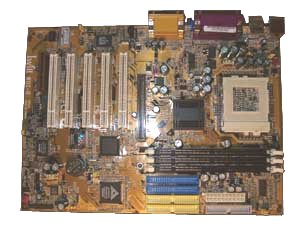
The board is shipped in an unusual box. It has got some cutouts, through which you can see the motherboard and drivers.  The board is packed in a plastic enclosure, where beside the board you can find cables, manual and drivers to AMI raid-controller on diskettes which are doubled on a CD. The CD with drivers is fixed on a surface of the enclosure what makes difficulties while taking it out. The CD contains drivers to the mainboard and utilities, including Hyperdisk that ensures monitoring of hard disks status. A manual to the board is quite big - 162 pages total. The complete set includes two (and not one as usual) cables UDMA66 - it proves that Iwill takes care of their users. The board is equipped with two connectors for serial ports (one is located on the board, the other is implemented in the form of a plate on the rear side of the computer). Overclocking
"Microstepping" technology from Iwill offers a wide choice of frequencies
from 66 to 200 with 1 MHz increments - that's good, but considering that
a choice of voltage on the core and the chipset are to be made with jumpers
(+5% or +10%) makes such combo with this frequency set quite strange...
On the one hand, you can fluently adjust the frequency, on the other hand,
it is a real problem to up the voltage on the processor - first, it's not
convenient to open the case each time; second, resulting voltage range
is small:
In some cases it wouldn't be enough for a processor to work stable, or it might require extra cooling. The memory working frequency can be changed beginning from 133 MHz FSB,
what is a drawback of a chipset (not the board). There are 3 alternatives:
"By SPD", 100 MHz, 133 MHz. On AGP and PCI in BIOS there is no choice for
scaler - it is done automatically:
MiscellaneousChoice of a chipset for the next generation of Iwill boards is not a problem - i815E meets all up-to-date requirements - it supports FSB 133 MHz, AGP 4x mode, ATA100 protocol. 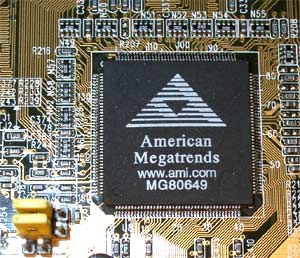 The main difference of WO2-R board from others on i815E chipset is in a raid-controller designed on MG80649 chip with a possibility to change block size from 32 KBytes to 4096 KBytes . The layout was made competently, only two slight drawbacks - CD-in connector is located right in front of an AGP slot, so it will take some time and efforts to put in a sound cable from a CDROM with a video card being in. And the second is that numeration of IDE connectors is unusual. 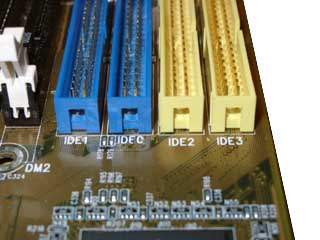 An interesting feature is support of Autoswapping PS/2 connectors - on this board there is no difference between the connectors. You can put in a mouse or a keyboard in the first or in the second one. Besides, we should notice that there included full-value hardware sound from C-Media - CMI8738 chip, instead of an integrated AC'97 codec. This solution allows unloading a processor and even connecting 4 speakers plus a subwoofer (rear speakers are connected via line-in) BIOS of the motherboard is supplied with a lot of settings - including a proprietary "Microstepping" technology, fine settings of memory timings and one more very interesting feature - PhoenixNet. In case of installation of the board in the Internet Explorer a button for a quick site access (PhoenixNet) appears, where you can view news and download some Shareware programs. While installation of the board we faced some difficulties - first, we connected the HDD to the first raid channel, and the CDROM to the second one - while CDROM initialization the system buzzed. Well, even with a new BIOS upgrade nothing has changed. Therefore, we installed the CDROM on a regular controller. Then we installed WinME system on the HDD, where the drivers to CMD controller were. The drivers were replaced by the latest from the AMI site, and everything started to work (until some time). Hyperdisk utility, which provided monitoring of hard discs connected to raid, required Internet Explorer 5.0 or higher. Explorer 5.5, provided with WinME, didn't help us - it gave out a message: "This is not a Microsoft Management Console Document". When connecting the HDD with installed Win98SE it worked flawlessly - you can view logs of HDD work of raid array, or you can also follow changes in the SMART table. Starting a test...Running SysMark 2000, Bryce 4.0 test we faced a blue screen with a message on impossible recording on the disc. After rebooting, Scandisk checked a surface of the disc - everything was OK. Again SysMark 2000 - the result was the same. After a bit of mess we downloaded the latest drivers to the controller from the Iwill site and only then we received stable work. For the test we assembled the following system:
Software:
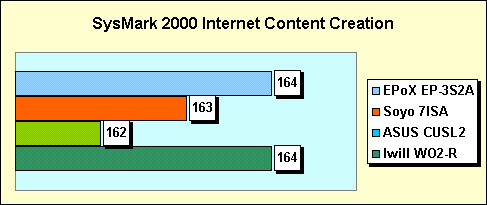  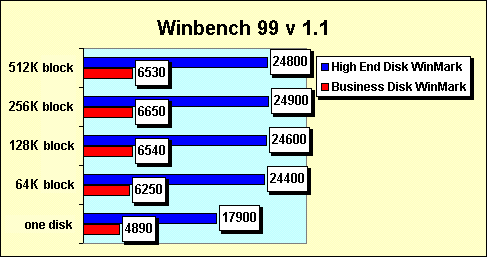 It was very interesting to compare the performance of a disc subsystem based on the hard disc IBM DTLA 307020 which is connected to a regular controller from Intel with a system based on two such discs connected to raid-controller in stripe mode, and then consider how 2-disc system speed depends on a block size which is set in the configuration program of a raid-controller. The tests on work parameters were carried out with the help of Business Disk Bencmark and High End Disk Benchmark from Winbench 99 packet (with different business applications). As you can see from the results, 256 KBytes block turned to be the most optimal size on our system. On increasing or decreasing the results are coming worse, but in each certain case the result is different - everything depends on the size of a cluster used on your hard disc and on definite tasks. In our case discs were divided in FAT32 file system, and the cluster size constituted 16 KBytes (if one disc) and 32 KBytes (if two discs); these are the standard values for discs 20 and 40 GBytes correspondingly. As you can see the board works not worse than its competitors in business applications and in Quake3 - this should have been expected considering that all of them are made on one chipset and knowing previous boards from Iwill. ConclusionThe Iwill WO2-R motherboard proved to be just perfect - good performance as comparing with its competitors, stable work both with an integrated IDE controller and with an integrated raid from AMI (though you should download the drivers beforehand). We recommend you to buy this board without any precautions - the i815E chipset together with IDE RAID compose a high-efficient system which at this moment is much more beneficial than many more expensive ones. Highs:
Lows:
Write a comment below. No registration needed!
|
|
Platform · Video · Multimedia · Mobile · Other || About us & Privacy policy · Twitter · Facebook
Copyright © Byrds Research & Publishing, Ltd., 1997–2011. All rights reserved.